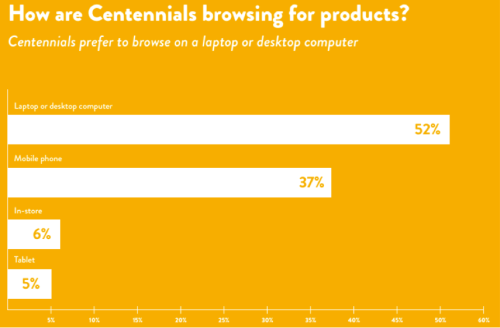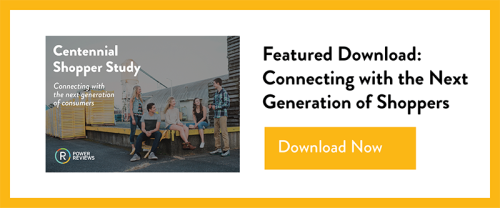Over the past decade or so, there’s been a ton of commentary on the best way to engage with Millennials (consumers age 19-34). In fact, some claim that Millennials are the most studied generation ever. But while everyone’s been focused on the Millennials, the next generation of shoppers — the Centennials — have been growing up quickly.
How are the shopping habits of Centennials (age 13-18, also known as Generation Z) different from those of Millennials? PowerReviews conducted a survey of more than 1,700 Millennial and Centennial consumers in the U.S. to answer that question.
Read on to learn how Generation Z is conducting product research prior to purchase, as well as 3 tips for better engaging with this generation while they’re doing their product research.
Centennials Research First, Spend Later
Centennials have grown up in the worst recession on record, so it’s not surprising that they’re generally resourceful and practical when it comes to spending money. In fact, nearly three quarters of Centennials say they take their time with most purchases by researching price, reading product reviews, and exploring different brands.
In addition, Centennials are savers rather than spenders. In fact, three quarters of Centennials say they prefer to save money for the future rather than immediately spend on the products they want. And, they strive to be independent. When Centennials have a big purchase on the horizon, nearly half save up and buy it themselves. A third admit they do have help from their parents but still make a contribution. And just 13% of Centennials reported being treated to the product outright by their parents.
Centennials Prefer Browsing on Laptop and Desktop Computers
According to the Pew Research Center, 85% of teens have access to a smartphone. So it comes as a surprise that more that half of Centennials prefer to do their product research on a laptop or desktop computer. The second most favored method for product research is the mobile phone, follow by the tablet. While Centennials do purchase in store, just 6% will do their research there. This is a clear warning shot that retailers should give Centennials lots of information early in their shopping journey.

Centennials Care About Quality
The majority (70%) of Centennials say that quality is more important to them than price. So how do they determine quality? By reading online reviews. In fact, nearly half of Centennials say they won’t purchase a product if there aren’t enough reviews.
Reviews are now an expected part of the shopping experience with 95% of Centennials searching for and reading reviews to enhance and validate their product choice. The majority (52%) seek out reviews on third party blogs and websites. But a third want to see reviews directly on a retailer or brand’s website. It’s a new demand, which is on the rise. Retailer and brand websites that don’t have reviews are at a disadvantage and risk losing customers at a key part of their shopping journey.
Connecting With Centennials While They Browse
How can brands and retailers better connect with Centennial shoppers while they’re conducting product research? Here are three key tips.
- Emphasize quality and differentiation: Centennials seek quality over price. So make sure the reviews you feature discuss the quality of your products, rather than exclusively praising low pricing and delivery costs.
- Engage early online: Nearly all Centennials are doing their product research online, so it’s key for brands and retailers to optimize their websites for browsing and purchasing. Centennials are hungry for information, so make sure you have lots of interesting and helpful product information, descriptions, sizing information, photos, and reviews.
- Bolster your online presence: Centennials are using their desktop computers and mobile phones as a key part of their shopping experience. Ensure your website is optimized for mobile so it loads quickly and is easy to view and navigate, no matter where your customer is searching.
Now is the time to learn all you can about the next generation of shoppers and tailor your marketing strategy accordingly. Remember: If you fail to engage with this generation, they have the independence and control to conduct their entire shopper journey without you.






